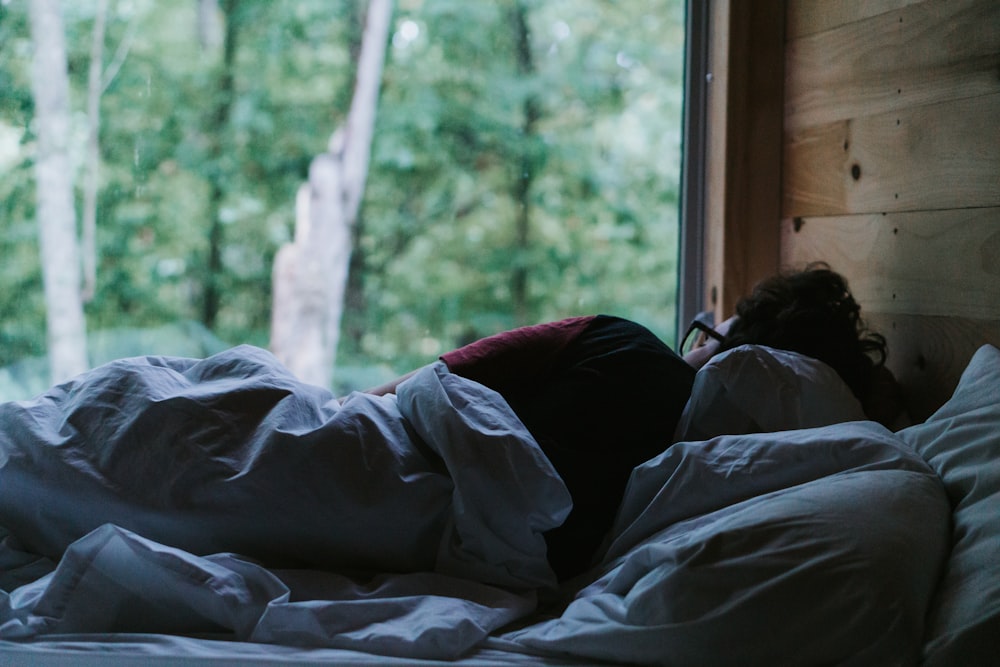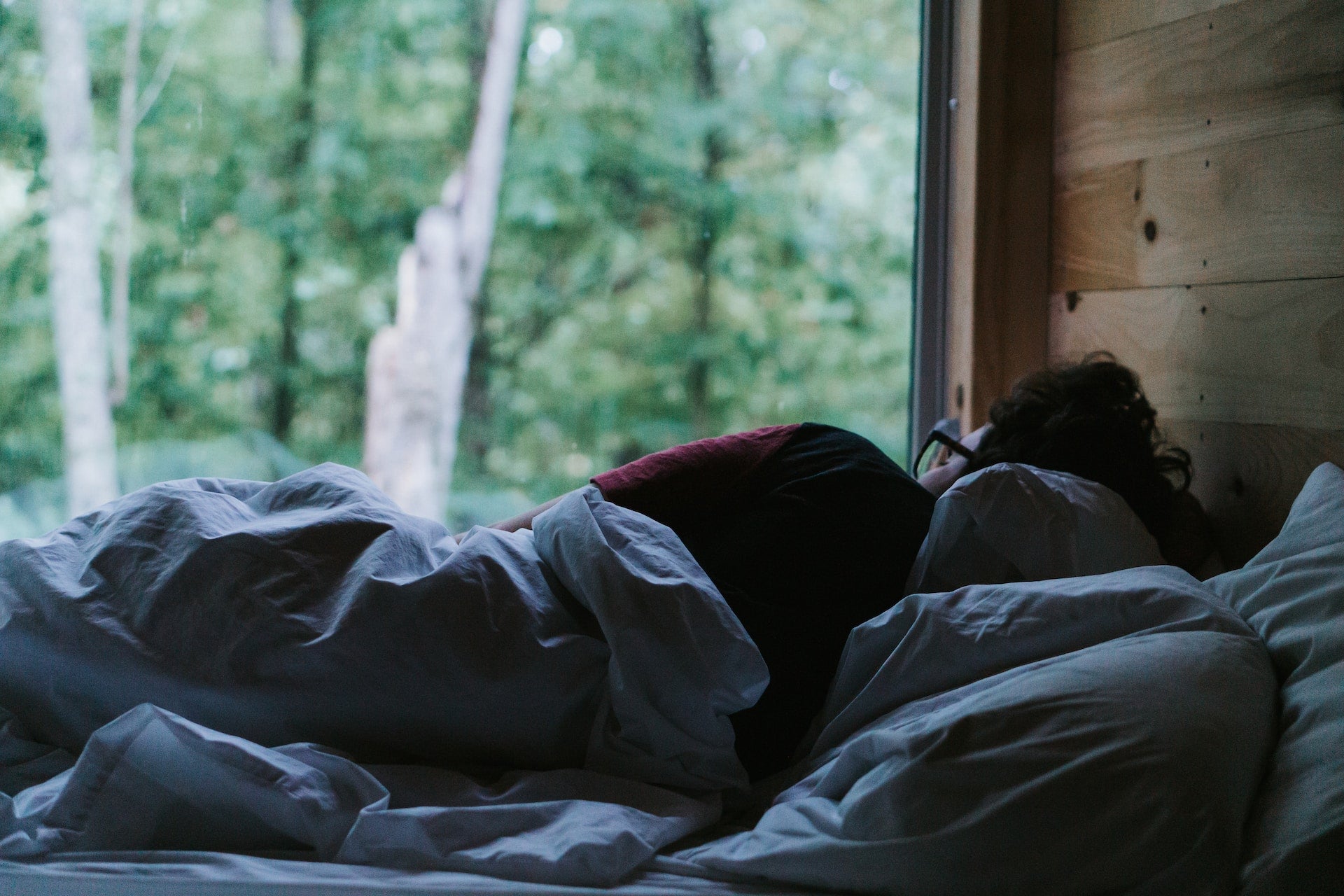Everyone has a sleep position that they find to be the most comfortable. But whether you prefer to sleep on your back, side, or stomach, a diagnosis of obstructive sleep apnea could bring about some changes to your sleep habits — including your sleep position.
While you can certainly wear a CPAP mask in any sleep position, there is no denying that some positions are better suited for CPAP therapy than others. Here’s a closer look at how your sleep position can affect your CPAP treatment, and what adjustments you might need to make to achieve better sleep.
Some General Facts on Sleep Position and Sleep Apnea

There are many factors that can influence your risk for sleep apnea, like your weight. However, the position you sleep in at night can also affect the severity of your sleep interruptions.
According to the Sleep Foundation, side sleeping can actually reduce breathing disruptions for both obstructive sleep apnea and central sleep apnea. This is because sleeping on your side makes it "less likely that tissues in your mouth and throat will move into a position where they can block your airway.” Side sleeping can also reduce snoring.
Some studies also indicate that sleeping on your stomach can help reduce breathing interruptions caused by sleep apnea, though this is not as conclusive as findings on side sleeping.
So what is it that makes sleeping on your back a bad choice for if you have sleep apnea? It all comes down to gravity. Sleeping on your back makes it more likely for your tongue to fall back in the mouth in a way that obstructs airflow. Back sleeping can also worsen central sleep apnea. Because of this, it is recommended that back sleepers with sleep apnea either switch to a different sleep position or try sleeping with their head elevated.
Of course, adjusting your sleep position likely won’t be enough on its own to resolve sleep apnea (though this can be successful for some people with mild cases). You’ll most likely need to get a CPAP machine — and the right type of mask for your preferred sleep position.
Adjusting Your Sleep Position When Wearing a CPAP Mask

Some sleep positions are better suited for CPAP masks than others. Fortunately, thanks to the variety of CPAP masks available and other tools to help you sleep in a “better” position, you can enjoy quality treatment.
Stomach sleepers: Sleeping on your stomach is generally considered the worst option for CPAP therapy. Sleeping on your stomach could cause the mask to get pressed against your face because of how your face is positioned on the pillow. Stomach sleeping can also make it easier for larger masks (such as full face masks) to shift out of place. The resulting leaks would make treatment less effective than it should be.
That being said, nasal pillows can work for stomach sleepers. Nasal pillows are inserted in the nostrils, rather than using a larger mask that goes over the nose (and sometimes the mouth, too). However, nasal pillows are generally better suited for lower air pressure settings. They’re not a good fit for people who breathe through their mouth during sleep. If nasal pillows aren’t suitable for your sleep apnea, you may need to adjust your sleep position so you can use a nasal mask or full face mask.
Side sleepers: While sleeping on your side can help reduce sleep apnea symptoms, it can still be a little tricky for wearing a CPAP mask. This is because a full face mask will often still press against the pillow, which could cause it to get pushed out of position.
However, side sleepers can usually use nasal masks or nasal pillows, since the smaller “profile” of these masks keeps them from coming in contact with the pillow. Adjustable headgear can also help ensure that your CPAP mask maintains an airtight seal.
Back sleepers: While sleeping on your back is bad for sleep apnea in general, it is the position that is most accommodating to different types of CPAP masks. Sleeping on your back will keep your mask from coming in contact with your pillow. As a result, even full face masks should stay securely in place throughout the night.
Depending on your preferred sleep position, you may want to consider additional sleep aids so that you can comfortably wear your CPAP mask at night. For example, CPAP pillows are designed to be more accommodating to CPAP masks while sleeping on your side, making you less likely to accidentally dislodge your mask during sleep.
For people who have been advised to sleep on their side to reduce sleep apnea severity, using a body pillow or placing a pillow between your knees can make it easier to stay on your side while also preventing aches and soreness.
Get the CPAP Supplies You Need For Better Sleep
No matter what your preferred sleep position might be, there’s no denying that using a CPAP machine can make a big difference in keeping sleep apnea in check. By making the necessary adjustments, you can ensure that your CPAP machine works properly so you can get a full night of uninterrupted sleep.
Of course, CPAP machines and other equipment can be very expensive, especially if you don’t have health insurance. This is where No Insurance Medical Supplies comes in. With our best price guarantee, you can enjoy great discounts on a wide variety of CPAP machines, masks, and more. You’ll also get free shipping on most orders of $99 and up.
With the right sleep solutions, the quality rest you need is closer than you think!

